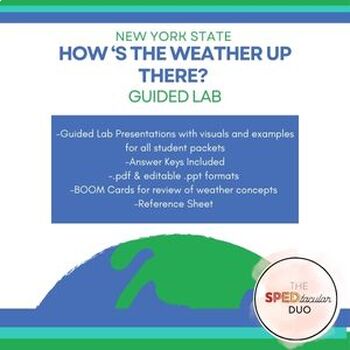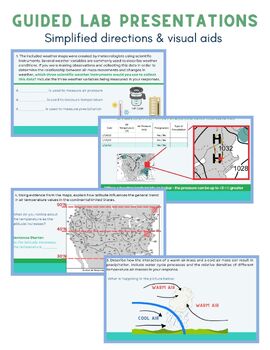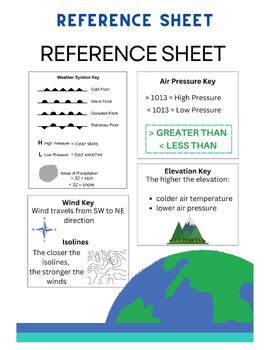NYS How's the Weather Up There? Guided Lab, Pre-lab Boom Cards, Reference Sheet
- Zip
Description
In this resource you will find a copy of a Boom card deck to review students with the weather concepts they will be exposed to in the NYS How’s the Weather Up there? Lab Investigation. This set can be done as a pre-lab activity.
Also included in this resource are two guided lab presentations that break down the investigation step by step. They provide visuals for students, simplify the questions and include sentence starters. These are meant to scaffold for the students as they complete the lab. There are two formats - .pdf which I would use with Kami or ppt.
A reference sheet that covers the key pieces of information students need in order to complete the lab questions is also attached and a .gif of the weather patterns to help visualize question 3 in student answer packet 1.
Answer keys are included for both presentations. Please note that all answers can also be found in the NYS Teacher Materials for this lab. Answers may vary.





